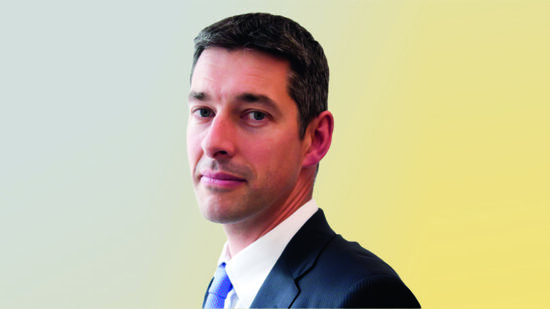Which countries are M&G’s funds sold in?
M&G has historically been a UK-centric organisation, until after its acquisition by Prudential in 1999. When we expanded into Europe we opened in Germany in 2002, followed by Austria quite quickly, Italy and Luxembourg in 2003, Switzerland in 2004, and distribution offices in Spain in 2005 and France in 2007.
Today, we have offices in Frankfurt, Vienna, Milan, Madrid and Paris. We are not registered in Belgium and Portugal.
All our funds are registered as UK Oeics and have sterling shares classes for the UK market and dollar and euro share classes for the non-UK investors registered across Europe.
Why not the Sicav route?
When we first took the decision to go into Europe we wanted to try and have what I call the ‘manufacture once, distribute many process’ that’s highly scaleable.
If you have a long-term track record on existing products then when you launch into a new market you don’t have to start from zero with no assets in the fund and no track record.
We found it much easier to get critical mass by leveraging off our existing Oeic structure. I think Threadneedle has been the only other group to use its Oeic structure across Europe.
The UK government is very keen to promote the fact you don’t have to go to Luxembourg to launch a Sicav in order to have a pan-European or indeed a global distributing product.
We have the Oeic registered in Singapore for accredited investors as well. We are in the process of looking at Hong Kong and we also have a reduced range of funds registered in Chile.
Chile has an enormously large market for mutual funds. There are six Chilean pension funds and the four big ones have about $170bn under management, of which around $60bn is in mutual funds.
How does your product range reflect the different requirements of investors around the world?
We have about 60 funds today, some of which appeal more to European than UK investors. Our backbook of long-term products has a UK bias, whether it’s M&G’s Recovery, Strategic Bond or Dividend funds. All those funds have a 95%-plus UK investor base.
But what we tried to do in 2000 was to invest in our global equity team. We launched a number of global equity products to attract the European investor base. We now have more money under management from European investments than when we first looked at Europe in 2001, so we’ve built another M&G in Europe since then.
We started launching and promoting products to specific European investors, such Global Basics, managed by Graham French, and Aled Smith-run Global Leaders, and those two products were very successful in the first half of the noughties, giving us European traction.
By the time we got to 2007, our European investors saw us as a boutique global equity fund manager with some pretty strong skills in UK equity portfolio management as well.
When I inherited the head of global sales role in 2008, it was quite worrying for me to have only an equity strategy. You are horribly exposed to equity market beta and European investor sentiment towards buying equities as a risk on asset class.
So we started to export our capabilities as a European fixed income asset manager. We already had these funds and we began to promote them much more assertively into Europe.
We started promoting our European corporate bond fund, which has now been hugely successful. We’ve also started promoting the Optimal Income fund, not just to UK investors, and have made sure that where we have fixed income products there is a European head share class for European investors and a dollar head share class for dollar investors.
The M&G Optimal Income fund, run by Richard Woolnough, and the M&G Global Dividend fund are now two of the top 10 best-selling funds across Europe.
What is the global pattern of fund sector sales?
For the UK you have a high exposure to UK equities and a strong equity culture. When you go into Europe the default position is to have 60% or 70% exposure to fixed income.
But because of the eurozone crisis and concerns over European domestic bonds, there’s been a massive adoption of global bond funds in Europe. This was a big shift two or three years ago.
The other point is that because European investors allocate less to equities, they are much more keen to buy the global equity solution.
Are you surprised by any sectors that are not popular?
In the UK there hads been a big adoption of global equity income products and a lot of income multi-asset launches. Those are the two asset classes that are starting to gain more traction in Europe as European investors begin to realise they can’t get all their income from cash.
We might see companies realising that if they want their share price to go up they had better have a progressive dividend policy because that is what investors are looking for now, when 10 years ago they were only looking for growth.
What is the split of M&G’s total funds in terms of asset classes?
In the UK we are seeing a shift away from domestic corporate bonds towards more flexible and fixed income mandates. There is also a shift out of UK equities into global equities.
I am starting to see UK investors behave more like European investors. The other theme I see is investors are no longer chasing the latest hot story, and are less interested in sector and thematic funds that are quite specialist in nature.
What percentage of your global fund sales are through IFAs?
Assets and sales in the UK are probably about two-thirds through IFAs. In France the percentage is rapidly growing and IFAs are 25% of our sales, and I include here retail banks that behave like an IFA in Europe.
In Germany it’s about 50%, Switzerland does not have a retail market per se, Spain is developing one so about 10-15% and in Italy it’s about 60-70% in the retail advisory space – not necessarily IFAs but lots of retail banks that have financial advisers working for them, with open-architecture fund lists.
In the UK, 95% of IFA flows go through platforms, almost entirely built for IFAs. In Europe almost everyone uses a platform. It’s the banks that build the platform, not only for the IFAs in the market but also for the internal fund of funds, private banking or retail arm.
UBS is a great example. It has a good platform across Europe, which it uses for its private banking arm, its discretionary portfolio but also to provide platform services to third-party wealth managers and IFAs.
Are you planning on entering any new markets?
Four or five years ago everyone said you’ve got to go to the Middle East and I went there a few times a year and talked to a number of clients.
I realised the biggest opportunity for distribution in the Middle East is through the institutional market, not necessarily through the banking world. There’s a lot of regulatory change going on in the region right now, which I’m watching with interest, but if I go to a global distributor today and ask where is important for me, they will tell me it’s Singapore, Hong Kong, Latin America. No one mentions the Middle East.
The most recent market launch was into Singapore a couple of years ago and we’ve now got a clear base in Asia. The next step will be to complete our registration and licensing in Hong Kong.
As an organisation we spent a lot of years building up our European distribution, picking off countries one by one. Over the past three years we’ve changed the strategy as Europe has become much more global bank-led, what I call ‘the national champions’. These are UBS Credit Suisse, BNP and Société Générale in France, ABN in the Netherlands, Deutsche in Germany, Santander in Spain, Barclays and HSBC in the UK.
These would be examples of banks that have been linking into a number of product providers under a partnership deal.
We’ve been very successful in tying up with a number of these groups. It’s not just about your product range but about being able to demonstrate that you can support those advisers and those bankers in the markets in which they operate.
That took us to launching in Singapore two or three years ago and it’s making me now look at Latin America because we are seeing a lot of European banks expanding there.








